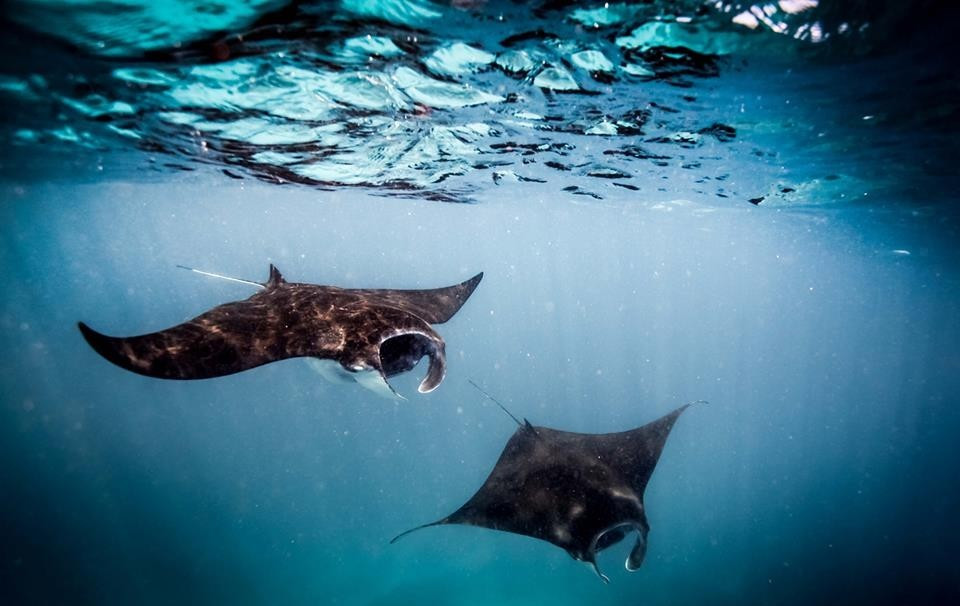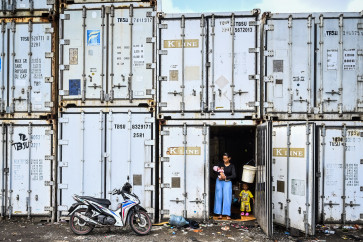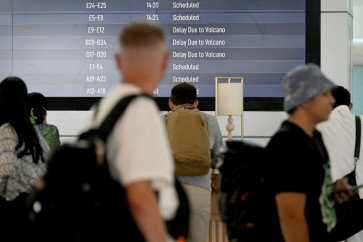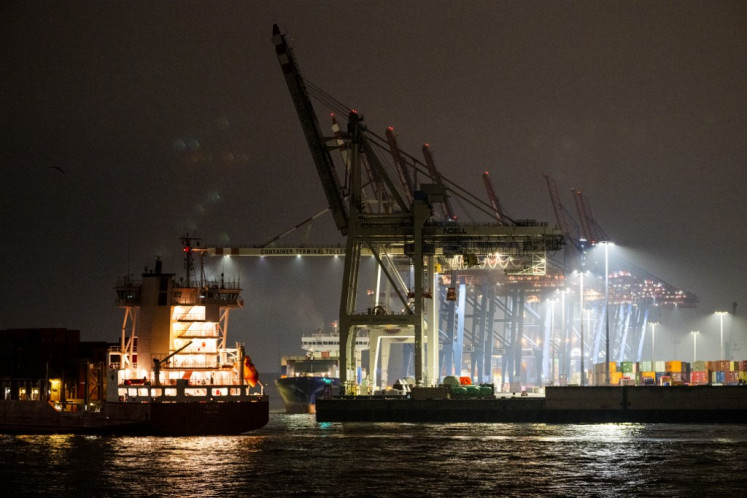Popular Reads
Top Results
Can't find what you're looking for?
View all search resultsPopular Reads
Top Results
Can't find what you're looking for?
View all search results‘Underwater stealth bombers’ forced out of Raja Ampat
As the waters of Raja Ampat grow warmer due to climate change, the manta rays’ food source migrates to cooler regions.
Change text size
Gift Premium Articles
to Anyone
T
wo manta ray species, the oceanic manta ray and the reef manta ray, inhabit the waters of Raja Ampat Islands in West Papua. Each species has distinct morphological characteristics and behaviors, but the most glaring difference between the two is that oceanic mantas grow much larger.
With their graceful and silent speed, clocking in at 3 meters per second (m/s) and even 5 m/s for short distances, manta rays were the inspiration for the world’s deadliest stealth bombers. But as temperatures continue to rise in Raja Ampat, these underwater fliers might soon face eviction.
In the beautiful coral paradise off Papua, some oceanic manta rays can grow up to 7 meters in disc width (wing tip to wing tip), equivalent to three people with their arms outstretched. And like stealth bombers, they are difficult to spot, as they often live and feed in waters to depths of 150 meters, where their main food source, zooplanktons, is found.
As the waters of Raja Ampat grow warmer due to climate change, the manta rays’ food source migrates to cooler regions. Zooplanktons are known to favor cool waters, and tend to move to the polar regions in both the northern and southern hemispheres when the temperature of equatorial seas rise.
The scarcity of food will thus soon prompt oceanic manta rays to leave the equatorial region of Raja Ampat to head north and south, following their staple food.
With global warming increasing sea surface temperatures, coupled with ocean acidification and dead zones (low-oxygen marine areas), the normally frequent visits of oceanic mantas could change. The oceanic manta will follow their food source north and south, potentially far from Raja Ampat.
Oceanic mantas are very likely to spend more time south of Raja Ampat, where upwelling in the Ceram Trough drives cold and nutrient-rich deep water to the ocean’s surface to host a greater density of zooplankton prey.
Sightings of these majestic and stealthy creatures are much less frequent when surface temperatures are warmer in the seas of Raja Ampat. Oceanic manta rays are often sighted in the Dampier Strait from December to March. They will potentially stop using the manta ray cleaning stations in central Raja Ampat completely, and instead spend more time in the Ceram Sea or further south.
A study of the sea surface temperature (SST) between October 2019 and August 2020 gives clues to their potential movement out of Raja Ampat, or to deeper waters in the area.
Records of sightings have been lower than normal or zero since mid-March 2020, due to the limited access to Raja Ampat during the COVID-19 pandemic. Therefore, SST monitoring should be compared regularly with sighting records to verify the relationship between SST and the presence of oceanic mantas, through citizen science efforts in the Dampier Strait in Raja Ampat.
***
The writer is a professor of Marine Biology, Research Center for Pacific Marine Resources, University of Papua (UNIPA), Manokwari.










